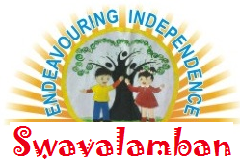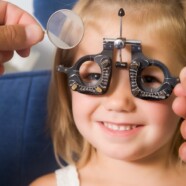Play: The highest form of Research and favorite way of Learning
Play: The highest form of Research and favorite way of Learning mother-child plays strengthens the bonding Play is a primary occupation of childhood which is characterized by fun and spontaneity and involves exploration, experimentation, imitation and repetition. Play is also considered as our brain’s favorite way of learning new things. Play deprivation is common in children with developmental disabilities because of different forms of barrier which include limitation imposed by care givers,physical limitation of child due to spasticity, environmental barrier in home or...
Read MoreVisual Disorder Associated with Cerebral Palsy
Visual impairments can result from problems with any part of the visual system including the eyes,eye muscles, optic nerve and the areas of cerebral cortex that process visual information. Optic nerve damage, visual field losses , and cataracts are common in premature infant with retinopathy of prematurity. Children with cerebral palsy exhibit a variety of problems with acuity and focusing, oculomotor performance and visual perception. Almost 75 % children have refractive errors including near sightedness or farsightedness + astigmatism.Cortical visual impairment is defined as partial or...
Read MoreNeurodevelopmental Treatment (NDT) Approach in Cerebral Palsy
NDT approach NDT is a form of therapy used with persons who have central nervous system disorders resulting in abnormal posture & movement. Th treatment approach attempts to initiate or refine the normal stages & processes in the development of movement.Specific handling techniques as well as adaptive equipment are used to achieve inhibition of abnormal patterns, normalization of muscle tone & facilitation of more normal movement. The main principle of NDT are : The damaged central nervous system blocks normal movement. Abnormal muscle tone results in abnormal patterns...
Read MoreUnderstanding Primitive Reflexes
#reflexes #newborn #cerebralpalsy #primitive #infant reflexes A reflex is a muscle reaction that happens automatically in response to stimulation. Certain sensations or movements produces specific muscle response. Many infant reflexes will disappear as the child grows older, although some remain intact throughout adulthood. A reflex that is present after a certain age will when it is supposed to disappear will be considered as a sign of damage to brain or nervous system. Reflexes are the most objective part of neurological examination as these are extremely helpful in determining...
Read MoreCerebral Palsy: Dealing with Dysphagia
Cerebral palsy can affect the muscles which controls opening and closing of mouth,moves lips and tongue and jaw movement. The muscle coordination and movements in face and neck allows a person to breath,swallow and talk. Some children may face difficulties in chewing and swallowing food and liquid items, the condition is known as Dysphagia. Dysphagia occurs because the esophagus cannot move food and liquids from back of child’s mouth to the stomach. Due to feeding and swallowing problems the child may be prone to poor nutritional status,growth failure, chronic aspiration,...
Read More





 +91-94 24 851 514
+91-94 24 851 514







Recent Comments